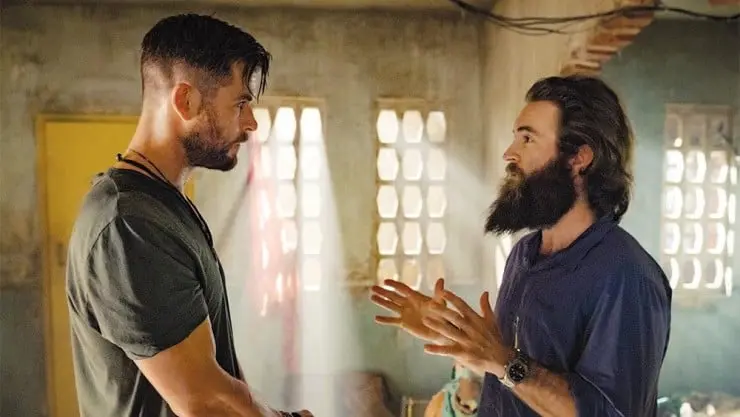Elevate the cinematic quality of your regular videos using these fundamental tips and techniques.

How To Shoot Like a Cinematographer, Not a Videographer
free ae templates free share ae downlaod free envato market free videohive free stock video free after effects templates
Elevate the cinematic quality of your regular videos using these fundamental tips and techniques.

As previously discussed on our website, there is a notable preoccupation among numerous professionals in the film and video industry with the term “cinematic” and its significance. For many, the term “cinematic” is simply equated with content shot on film.
However, for others, “cinematic” stands as the ultimate praise for any video project. In my understanding, this conveys that a director of photography (DP) or filmmaker has successfully captured footage using a digital video camera that possesses such exceptional visual quality that it exudes the essence of a cinematic experience, fitting seamlessly onto the grand theater screen and deserving of a presentation at a cinema-level standard.
Irrespective of personal viewpoints about the term, aspiring to achieve this objective isn’t unwarranted, particularly for cinematographers (and let’s be honest, if you’re identifying as a cinematographer, it’s likely that you’re pursuing this cinematic aesthetic). With this in mind, let’s delve into these guidelines aimed at transforming your ordinary video work into the realm of truly cinematic cinematography that befits the expertise of a skilled cinematographer.
Shoot at 24 FPS
As evident in the video showcased above by YouTuber Luc Forsyth, the initial stages of venturing into the realm of film and video can present a perplexing landscape when it comes to comprehending the intricacies tied to frame rates. To provide a concise introduction, Forsyth suggests that for beginners seeking to cultivate a more cinematic visual style, adhering to a standard of 24 frames per second is a valuable cornerstone.
Naturally, there will arise situations where the need arises to explore diverse frame rates, often opting for higher frequencies. However, if your intention revolves around smoothly transitioning from a videographer’s perspective to that of a cinematographer, the steadfast companion you’ll find in achieving this aspiration would be the utilization of 24 fps.
Create Shallow Depth of Field
Moving on to the subsequent segment of the video, the focus shifts towards the concept of depth of field—a pivotal facet of cinematographic artistry. This aspect is predominantly shaped by the characteristics of lenses rather than the cameras themselves. Grasping concepts like f-stop and focal length assumes paramount importance in deciphering the dynamics of depth of field.
In this context, Forsyth advocates the selection of lenses that facilitate capturing videos with a shallower depth of field. This approach not only aids in discovering but also crafting more pronounced bokeh—a term denoting those aesthetically pleasing and cinematic out-of-focus elements within a shot. These elements often imbue the background with a shimmering allure.
How to Use Your Zoom
This particular piece of advice is quite distinct and isn’t commonly explored in the majority of tutorials that delve into the fundamentals of cinematography. When individuals embark on their journey in the realm of video production, they are frequently advised to begin with a kit lens for their camera—a lens that is often of the zoom variety.
It’s with good reason that zoom lenses are recommended, given their capacity to provide broader coverage and the flexibility to capture shots at various focal lengths. While it’s true that zoom lenses come with a higher price tag than fixed or prime lenses, there’s a valid argument for opting for a single zoom lens initially. This choice can yield both financial and temporal savings in the short run, as opposed to acquiring an assortment of prime lenses.
Nevertheless, the presence of a zoom lens on your camera doesn’t automatically dictate its constant use. In fact, Forsyth contends that deploying the zoom function during a shot should be a rarity, and if employed, the process should be gradual and consistent. For the most part, keeping your shot steady and refraining from excessive zooming is likely the optimal approach.
The Importance of Lighting
Undoubtedly, it would be a significant understatement to emphasize the importance of lighting in the context of cinematography. In its essence, cinematography is intricately intertwined with the art of lighting. Consequently, the notion of enhancing one’s skills as a cinematographer without dedicating substantial attention to lighting would be markedly impractical.
The realm of lighting encompasses a vast expanse of knowledge, encompassing the nuances of illuminating scenes to achieve diverse visual effects. This involves mastering techniques for configuring artificial lighting setups to yield specific appearances, as well as leveraging the nuances of available natural light. Forsyth adeptly navigates through fundamental principles in this arena, offering valuable insights into aspects like backlighting and other techniques, which hold considerable promise for novices.
However, these aspects merely scratch the surface of cinematography’s foundational elements. If you’re eager to delve deeper into the art of cinematography, I recommend exploring our No Film School course, which delves into the intricacies of monetizing your skills as a cinematographer. The course can provide an enriched perspective on this captivating craft.
gfxdownload download videohive free free download vfx vfx download ae download share ae free essential graphics premiere pro flower titles aedownload audiojungle free download videohive prisma lens effects download premiere pro free templates













Leave a Comment